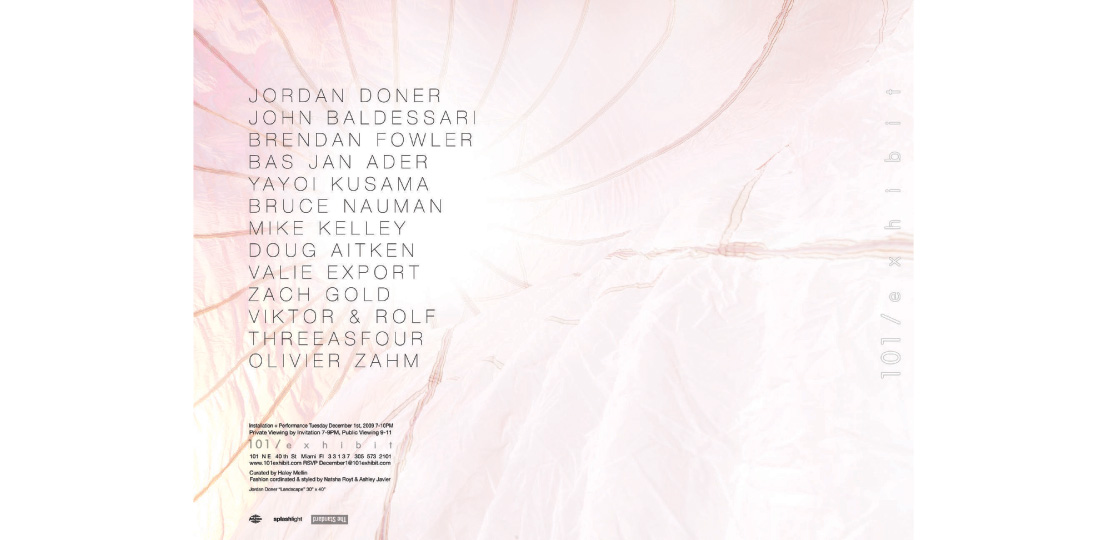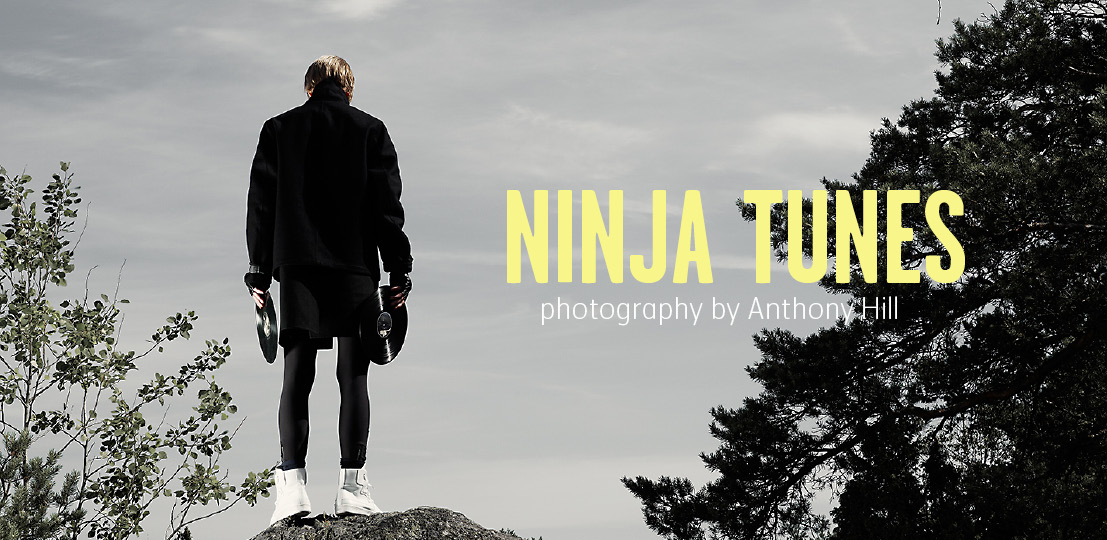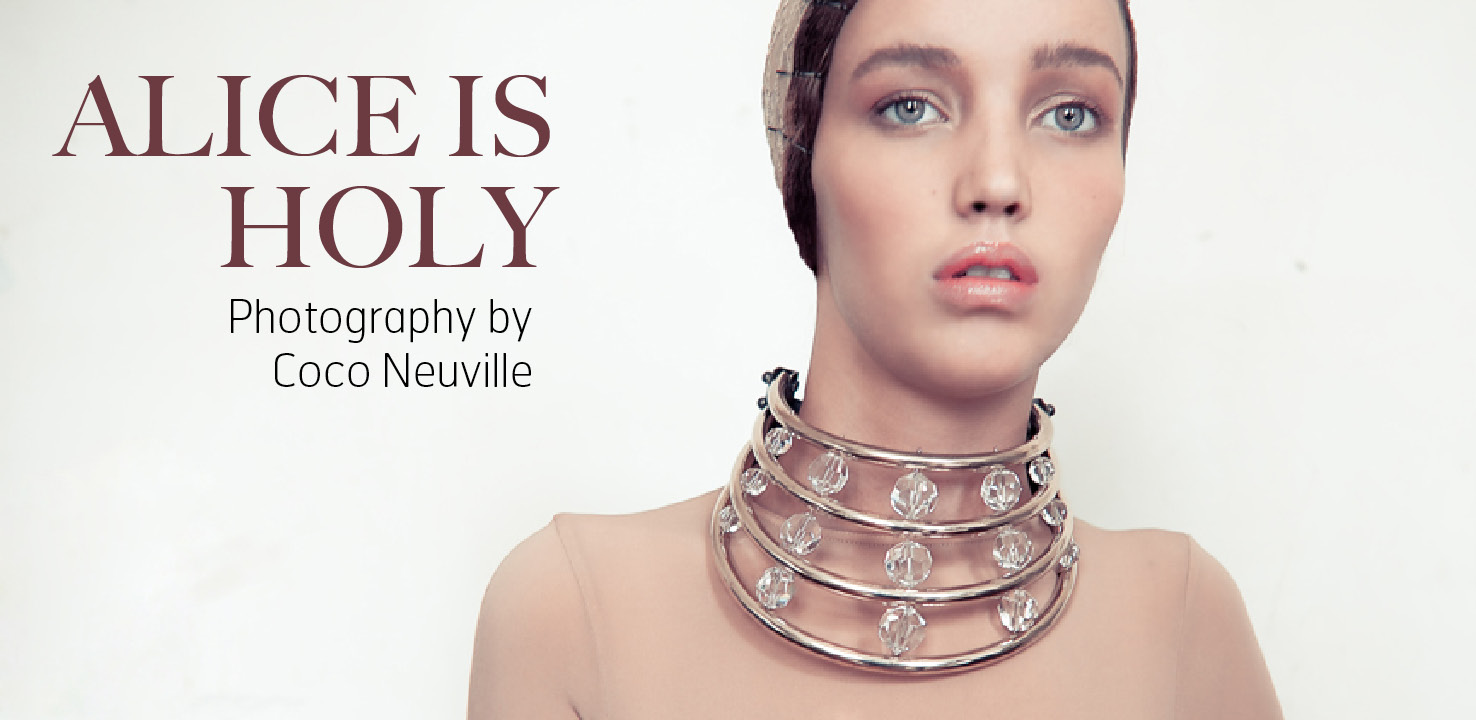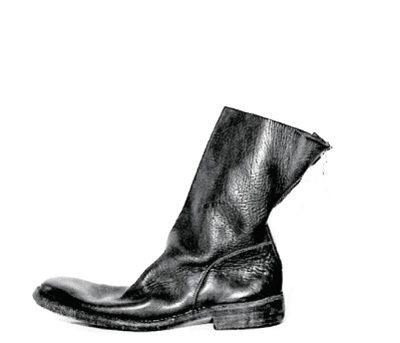
Images courtesy of Guidi


It’s no secret that the landscape of fashion manufacturing is changing. More and more high-end designers are outsourcing production to China and other third world countries in order to increase profit margins. Guidi, one of the most prestigious leather tanneries, is also one of the few left in Europe. Located in a small Tuscan town of Pescia, where leather tanning is a tradition that goes back to the 14th Century, Guidi has been producing fine leather since 1896. Today, it supplies leather to many top fashion houses. Several years ago, Guidi’s owner decided to start producing leather goods under its own name. This meant traditional artisanal production in limited runs, using its own leather, ranging from supple cowhide to hard cordovan. The footwear and bags are hand-finished and their styles rarely change, bucking the traditional notion that fashion must be fast-paced. Instead, Guidi is focused on longevity.
Insistence on permanence is not the only reason why Guidi stands out. The hard-core aesthetic of distressed, rugged-looking footwear and bags purposefully goes against the conventional image of polished Italian style.
(more…)
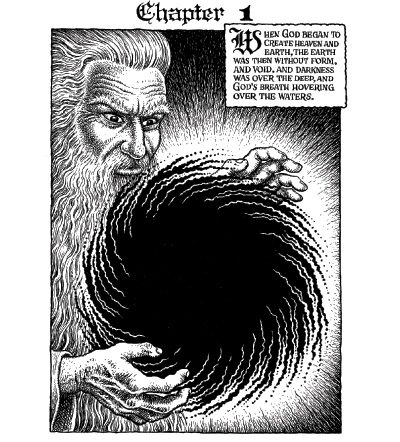
Chapter 1, The Book of Genesis Illustrated by R. Crumb 2009. Ink and correction fluid on paper. Courtesy of R. Crumb, Paul Morris, and David Zwirner, New York.


In the beginning, there was Crumb. One of the founding fathers of the underground comic movement in the U.S., he first came to our attention back in the 1960s chronicling the colorful adventures of Fritz the Cat and Mr. Natural. His latest project, The Book of Genesis Illustrated by R. Crumb, might come as a surprise to some but actually it’s not really such a big leap. There’s enough salacious material in the Bible to make even his Devil Girl blush.
Crumb, who’s been living in France with his wife and daughter since the late 1980s, spent five years on this project, working with a magnifying glass and a pot of black ink on all 207 illustrations. Despite his inclination for controversy over the years, Crumb stayed true to the text and approached the work as a straight illustration job, incorporating every word from all fifty chapters of Genesis. Avoiding any temptation to poke fun at the material, the result is an incredibly detailed and fresh look at some of the oldest stories known to the human race. Crumb did extensive research for this project to make sure he got everything just right. Words that all alone on the page might have seemed dry and didactic have now been transformed by Crumb’s pen into a story with all the drama of a telenovela. In the book’s introduction, Crumb calls Genesis “a powerful text with layers of meaning that reach deep into our collective consciousness, our historical consciousness.” In this unique edition, he has done justice both to that cultural context and to his own inimitable style. The wrath of God has never been this much fun.
(more…)

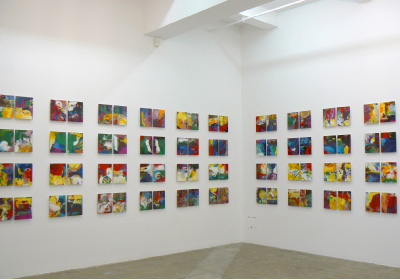
Images courtesy of Marian Goodman Gallery


Clement Greenberg, the infamous art critic who made and unmade Jackson Pollock, once wrote in his essay on the avant-garde that the goal of abstract painting is to imitate the process of art itself and not any discernable reality. Thus, painting becomes about paint, color, texture and line. If such criteria are valid, then Gerhard Richter’s new exhibition at Marian Goodman gallery, first in New York since 2005, is a definite success.
The show displays a comprehensive collection of Richter’s work from this decade. In the first room his biggest paintings provide a study in tone gradation. Through the glossy paint one can see the emotional intensity of the horizontal brush strokes, which makes the viewer feel the act of painting. The next room contains a new series of works titled Sindbad, painted in 2008. These are 30 cm x 50 cm paintings done in lacquer behind glass. Here, the prime colors collide in an almost phantasmagoric way, cutting and crashing into each other. The Grey series is a monochromatic study of texture; the oil paint is dabbed on the canvas, achieving a three-dimensional effect that is reminiscent of cracked desert surface. A standalone painting titled September is one of those rare abstract works whose visceral impact, achieved solely through its color and texture, so accurately reflects its name. Its colors convey the dreary mood of autumn, and its effect becomes even more solemn if you think of the events of 9/11.
(more…)
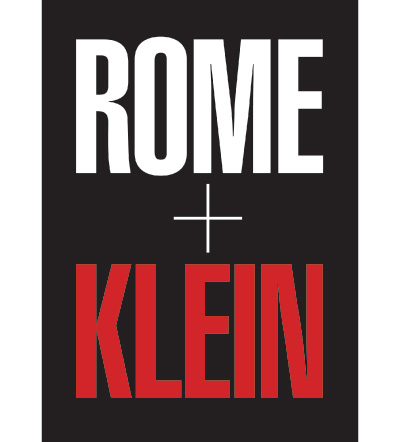
Images courtesy of Aperture

Some images stay with us, just as fresh and potent in the mind’s eye years later as they were the first time we saw them. Photographer William Klein’s homage to Rome — a celebration of the city’s beauty, its character, and its vitality — is one such case, spellbinding even 50 years later. In honor of the book’s golden anniversary, Aperture has re-released the Rome collection. Along with Klein’s classic pictorial diary, the new, two-volume, slip-cased version includes Klein’s never-before-seen fashion work (shot in the city), along with new and updated text by Klein himself.
In 1956, a 28-year-old Klein arrived in Rome to begin his first cinematic project, assisting famed Italian director Federico Fellini on his new film, Le Notti di Cabiria. Shooting was delayed, however, and Klein — though wildly disappointed — knew he had a choice to make: return home, or take advantage of his situation and shoot the city around him. The resulting collection is an unparalleled photographic diary of Klein’s travel through the eternal city, guided by an eclectic cast of artists and writers. As Fellini himself once said, “Rome is a movie, and Klein did it.”
Over the years, Klein has proved himself a jack-of-all-trades, exploring fine art and fashion photography, film, painting, and even graphic design. And he’s pushed the limits of his chosen fields, questioning the status quo. His fine art photography was a far cry from the reigning documentary style of the fifties. His fashion photography placed models out in the streets. And throughout the Rome collection, Klein’s signature style rings true.
(more…)
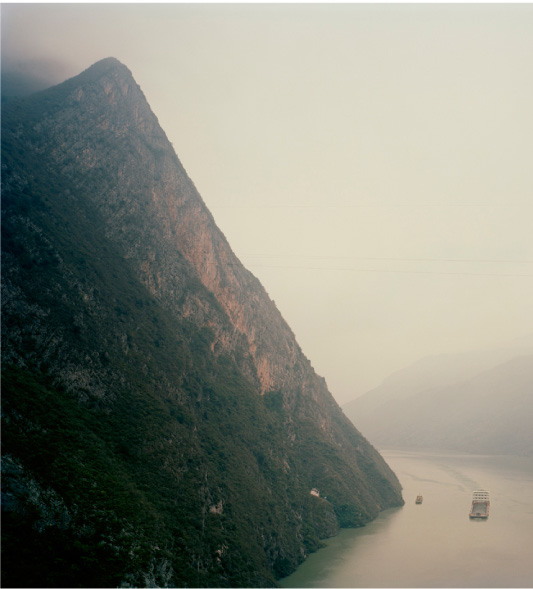
Wu Gorge Nadav Kander, courtesy of Flowers Gallery. (Click image to enlarge)

From 2006 to 2007, Nadav Kander, the celebrated London-based photographer and multiple-time contributor to PLANET, traversed China’s Yangtze River documenting the rapid pace of change occurring along its banks and the effect on the Chinese people. For this impressive body of work, Kander recently won the prestigious Prix Pictet, which was awarded two weeks ago in Paris by former U.N. secretary-general Kofi Annan. The international award recognizes important photographic works with a focus on sustainable development and the environment. Kander’s subject, the Yangtze, is China’s most storied river, stretching from its source in the Kunlun Mountains down through the country’s southern heartland and back north again through China’s main industrial and commercial centers: Chongqing, Wuhan, Nanjing, and Shanghai, where its mouth opens to the East China Sea. At 4,100 miles, the Yangtze is considerably more than a river, having touched every aspect of Chinese cultural, economic, and spiritual life for over 5,000 years. For literally hundreds of millions of Chinese — more people live within a mile of its banks than in the entire United States — the Yangtze is a source of fresh water, food, energy, and is the lifeblood of a rapidly disappearing traditional way of life — in just the last decade over 3 million people have been displaced by the construction of the Three Gorges Dam. Kander’s work brings to light the enormous scale of change now underway, not just along the Yangtze but throughout China as it attempts to take another great leap forward, this time into the 21st century — and hopefully with less disastrous results.
(more…)
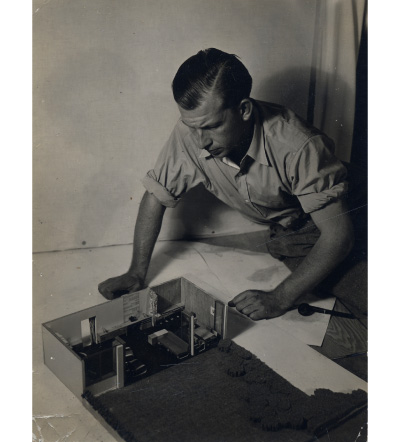

In terms of lifespan, architects are the opposite of rock stars. They tend to live long and do great work after their 80th birthday. Philip Johnson was still designing when he died at the age of 98. As you read this, Oscar Niemeyer, now 101, is probably scheming up his next project. Frank Lloyd Wright checked out at 91, six months before his Guggenheim Museum was to open. But Eero Saarinen is an exception. When the Finnish-born architect and furniture designer died at 51 (with nine buildings in progress), he was as famous as an architect could be. He’d designed a slick new landmark for St. Louis (the Gateway Arch) and had been on the cover of Time magazine. Perhaps most indicative of his place in 1950s America, President Eisenhower was scheduled to detonate a celebratory atom bomb at the opening of Saarinen’s General Motors Technical Center in Warren, Michigan. But that part of the festivities was cancelled.
Critics have said that Saarinen was too much of a corporate hired gun, designing safe buildings for large companies like CBS and IBM. His office parks, according the New York Times’ Nicolai Ouroussoff, “reinforced the sweeping shifts that reflected the dark side of the postwar era: the racial tensions and white flight, the excesses of the consumer culture, the suburban isolation.” And that may, in part, be true. But he was also behind some undeniably innovative designs. Eero Saarinen: Shaping the Future, a rich survey of his work at the Museum of the City of New York, succeeds at displaying the man’s range.
(more…)

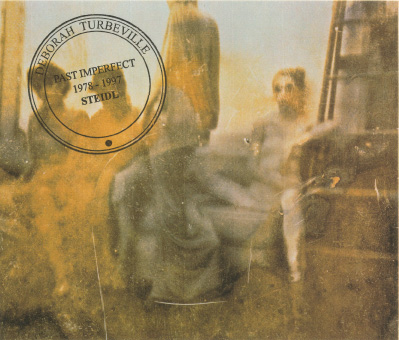
Past Imperfect by Deborah Turbeville published by
Steidl

Deborah Turbeville is an incorrigible romantic. Working since the early 70s as a fashion and art photographer, she developed an ethereal style, characterized by grainy, washed out, black and white images. Turbeville’s new book, Past Imperfect (Steidl, $59), is a careful study of her favorite subject: women in search. Laid out in fifteen vignettes on 190 pages, with locations ranging from coastal Rhode Island to the back alleys of Prague, the book depicts her heroines’ strife to transcend their banal existence, to seek whatever little grain of poetry can be found in their prosaic world. The photographs were taken between 1978 to 1997, some borrowed from her fashion shoots, others taken to complete her narrative of alienation.
Turbeville has a deep affinity to literature, which is easily discernable in Past Imperfect. It is no wonder that many of her models are Russian and French, the Anna Kareninas and the Madame Bovarys of her time. The book’s title refers to a quote from Proust’s article on Flaubert, which talks about the “mysterious sadness” of the past imperfect tense that insists on continuity of the past. This sense of lingering permeates Turbeville’s moody photography, in which time is not readily discernable; the photos could have been taken in 1890 or 1980. Turbeville writes about her women in the preface of the book: “I saw in them the ancient faces from a distant past… Anachronisms — walking through the streets of the present. They shared common bonds… Something of the endangered species told in their presence…”
(more…)






 Facebook
Facebook Permalink
Permalink Digg
Digg Reddit
Reddit LinkedIn
LinkedIn StumbleUpon
StumbleUpon Tumblr
Tumblr
